


FREE WHITE PAPER
Digital workplace is a buzzword these days. Actually different people use it to mean different things. So what is a digital workplace?
As the modern workplace continues to evolve with the rise of remote and hybrid work models, businesses are increasingly reliant on digital tools to facilitate seamless collaboration across departments, teams, and even external stakeholders. One of the most essential tools in this transformation is the extranet portal.

Extranet portals empower organizations to securely share documents, resources, and workflows with external users—partners, vendors, customers, or freelancers—without compromising internal data security. But with numerous platforms available on the market, choosing the right extranet software can be challenging.
In this comprehensive guide, we explain what an extranet portal actually is, outline its must-have features, walk you through the selection process, and present a side-by-side comparison of the Top 10 Best Extranet Portals for 2025.
The modern workplace is no longer defined by physical boundaries. Remote work, global teams, and intricate supply chains have transformed how businesses operate. While intranets have long served as internal communication and collaboration hubs, the need to securely share information and collaborate with external stakeholders has given rise to the extranet portal.
At its core, an extranet is a controlled private computer network that extends an organization’s intranet to allow secure communication and collaboration with authorized external parties. These external parties can include:
Think of it as a secure, walled garden that provides specific external users with access to relevant information and tools, without exposing the entire internal network. This selective access is crucial for maintaining data security and protecting sensitive business information.
Choosing the right extranet portal is a strategic decision that can significantly impact your organization’s efficiency, security, and external relationships. To help you navigate this crucial choice, we’ve synthesized the essential features into a comprehensive guide. Imagine these features as a team of specialized “Extranet Experts,” each bringing a vital skill to the table to ensure your portal is robust, user-friendly, and highly effective.
Here’s a recapitalized table highlighting the key features, personified as our Extranet Experts:
A great extranet portal must be a digital fortress — with the right doors open only to the right people.
✅ Why it matters: You protect sensitive business data while maintaining accountability and transparency.
The core utility of most extranets is easy and secure document exchange.
✅ Why it matters: Reduces friction when working with clients, legal teams, or contractors.
An extranet portal should go beyond file storage — it should enable action and discussion.
✅ Why it matters: Reduces tool-switching and centralizes external collaboration.
Professionalism and usability matter, especially when engaging with external stakeholders.
✅ Why it matters: Creates a seamless extension of your brand, and a more intuitive experience.
You can’t collaborate without effective information flow.
✅ Why it matters: Keeps everyone in the loop without drowning them in emails.
A powerful, intuitive search bar is more than a feature — it’s a time-saver.
✅ Why it matters: Cuts time spent hunting for files or updates.
Your extranet portal shouldn’t be an island.
✅ Why it matters: Keeps workflows unified and saves time re-entering data.
In a hybrid world, remote accessibility is essential.
✅ Why it matters: Keeps work moving, even when your team or partners are out of office.
A smart extranet portal doesn’t just connect people — it also tells you how they’re using it.
✅ Why it matters: Helps you improve content, identify bottlenecks, and measure ROI.
Don’t outgrow your extranet portal before your next product launch.
✅ Why it matters: Futureproofs your investment.
Even the best tool is useless if people don’t use it.
✅ Why it matters: Drives user adoption and reduces IT headaches.
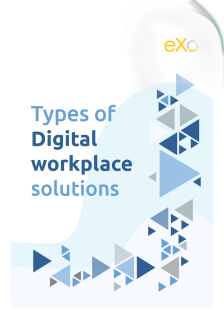
Types of Digital workplace solutions
Digital workplace is a buzzword these days. Actually different people use it to mean different things. So what is a digital workplace?



| Feature | What to Look For | Why It Matters |
| Security & Access Control | Role-based permissions, MFA, encryption, audit trails | Protects sensitive data and controls access |
| Document Management | Version control, secure sharing, co-authoring, drag-drop | Simplifies and secures collaboration |
| Collaboration Tools | Chat, forums, wikis, task tracking, calendars | Facilitates teamwork and real-time communication |
| Customization & Branding | Themes, logos, layouts, multilingual support | Enhances user experience and professionalism |
| Communication Features | News feeds, alerts, notifications, group messaging | Keeps users informed and engaged |
| Search Functionality | Keyword/tag search, filters, in-document search | Speeds up information discovery |
| Integrations | CRM, ERP, storage apps, SSO, API | Syncs with existing business tools |
| Mobile Access | Responsive UI, mobile-friendly interface | Supports remote and on-the-go work |
| Analytics & Reporting | Usage stats, user activity, content performance | Enables continuous improvement |
| Scalability | Flexible users, storage, deployment, modular features | Grows with your organization |
| Ease of Use & Support | Clean UI, low learning curve, help resources, strong support | Encourages adoption and minimizes training time |
☝️ Remember, your extranet portal should feel like an intuitive and trusted extension of your business relationships, facilitating clear communication and productive collaboration, making your external collaborations feel truly connected and effective.
Choosing the “best” extranet portal isn’t a one-size-fits-all endeavor. It depends on your specific organizational needs, budget, and the nature of your external collaborations. Here’s a systematic approach:
“You can’t choose the right tool if you don’t know what you’re building.”
Ask the foundational questions:
⏱️ Timeline Tip: Document everything — you’ll use this for evaluation later.
“Don’t just Google and go.”
🎯 Pro Tip: Focus on platforms with a strong security track record, user-friendly design, and responsive support.
“Know your must-haves vs. nice-to-haves.”
📋 Feature categories to consider:
“Touch it, test it, break it — before committing.”
🧭 Pilot path: Run a 2–4 week test with select users to catch usability or performance gaps early.
“Security isn’t a feature. It’s a foundation.”
🚨 Watch out: Some vendors limit security options to premium tiers.
“If it doesn’t connect, it creates silos.”
🔄 Look for: Pre-built connectors to reduce implementation time and cost.
“You’re not just buying for today.”
🧩 Tip: Ask about the vendor’s product roadmap.
“Total cost > monthly fee.”
💡 Look for: Transparent vendors with online pricing pages and real customer quotes.
“You’ll need help — make sure it’s there.”
🧑🏫 Ask for: Case studies or referrals from companies like yours.
“Before you go all-in, go small.”
🔁 Adapt, retrain, iterate. Then scale.
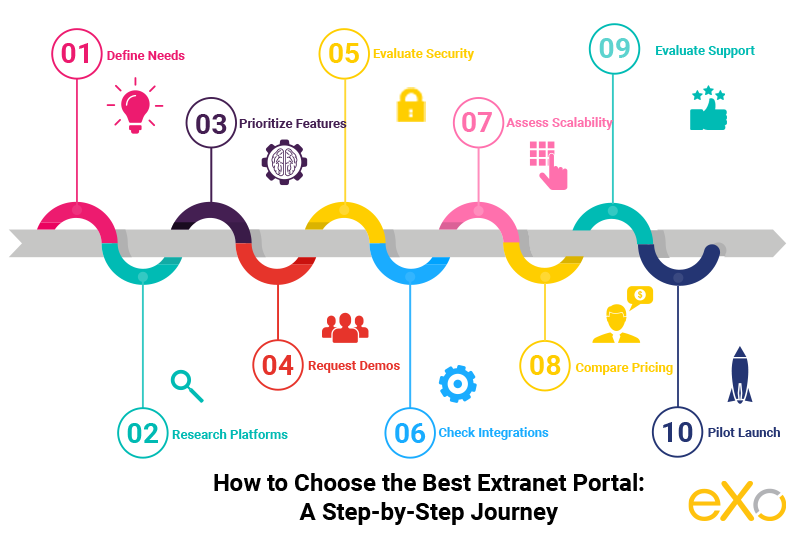
While some platforms primarily focus on intranets, many offer robust extranet capabilities or can be configured to serve as such. Here’s a look at some of the leading contenders in 2025:
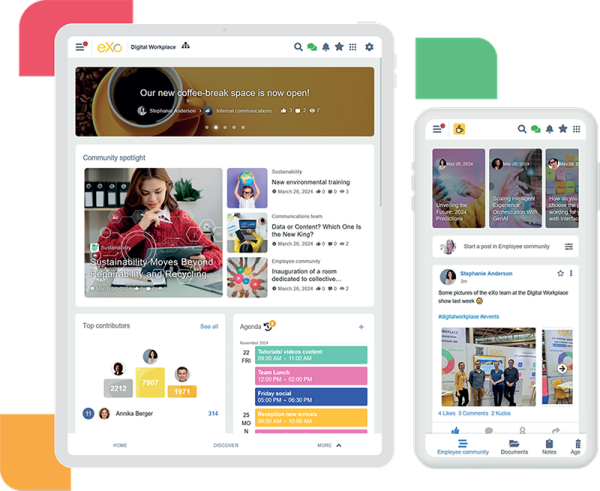
eXo Platform is a flexible, open-source digital workplace designed to enhance collaboration, communication, and knowledge sharing for both internal teams and external partners. It combines social intranet, document management, project collaboration, and AI-powered search into a single, unified platform.
With cloud and on-premise deployment options, robust security, and extensive customization capabilities, eXo Platform is ideal for businesses seeking a scalable, engagement-driven workplace solution.
✅ Social Collaboration – Activity streams, forums, wikis, and gamification tools to boost engagement.
✅ Document & Knowledge Management – Version control, access permissions, and AI-powered search.
✅ Customizable Workspaces – Drag-and-drop widgets, personalized dashboards, and modular design.
✅ Extranet & External Collaboration – Secure spaces for clients/partners with granular permissions.
✅ Integrations – Works with Microsoft 365, Google Workspace, Slack, Zoom, and Salesforce.
✅ Mobile-Friendly – Responsive design for seamless access on any device.
✅ Security & Compliance – GDPR-ready, SSO, and role-based access control (RBAC).
Despite a steeper learning curve, eXo Platform is a top-tier digital workplace because:
🔥Best for: Companies needing a highly customizable, secure, and engagement-driven digital workplace for both internal and external collaboration.
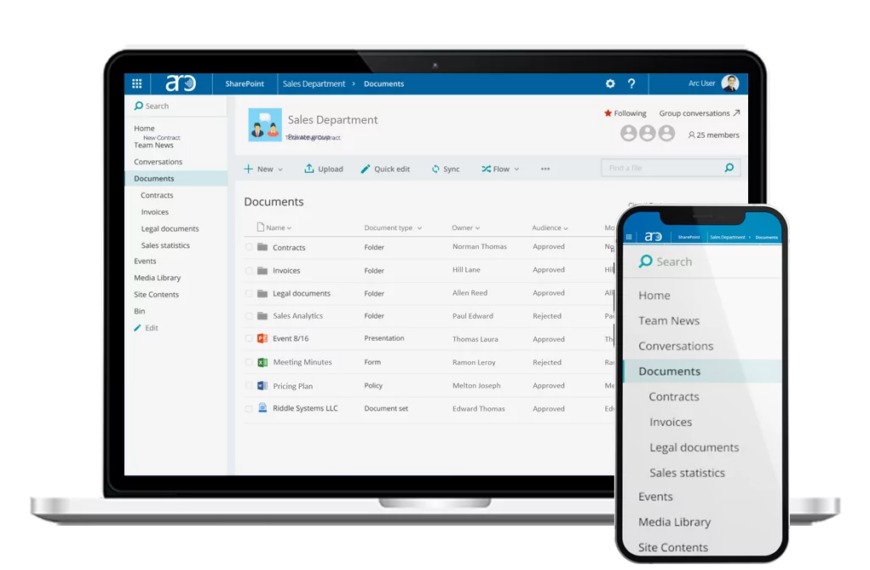
Microsoft SharePoint is a versatile platform deeply integrated within the Microsoft 365 ecosystem, widely used for internal collaboration and document management, with strong extranet capabilities.
SharePoint offers robust document management, team sites, content management, and workflow automation. Its integration with other Microsoft 365 applications (Teams, OneDrive, Outlook) is a significant advantage. It allows for highly customized portals and provides strong security features with granular access controls.
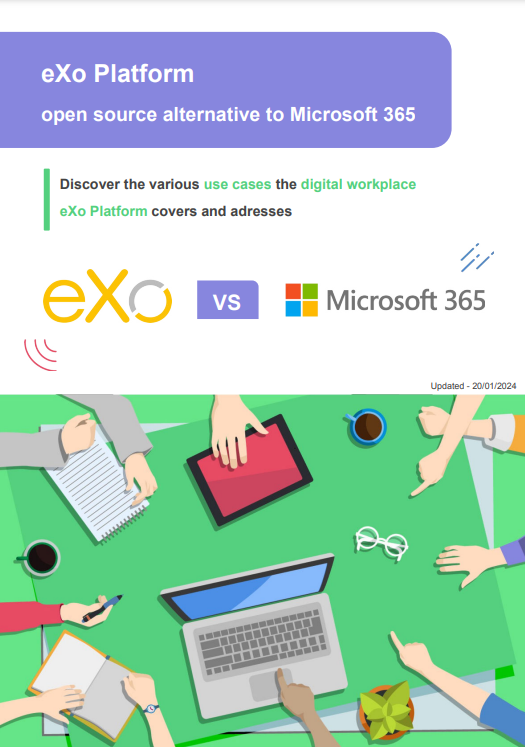
Open Source Alternative to Microsoft 365
Empower your organization with eXo Platform to break free from Microsoft dependencies and enhance collaboration with innovative solutions
Open Source Alternative to Microsoft 365
Empower your organization with eXo Platform to break free from Microsoft dependencies and enhance collaboration with innovative solutions
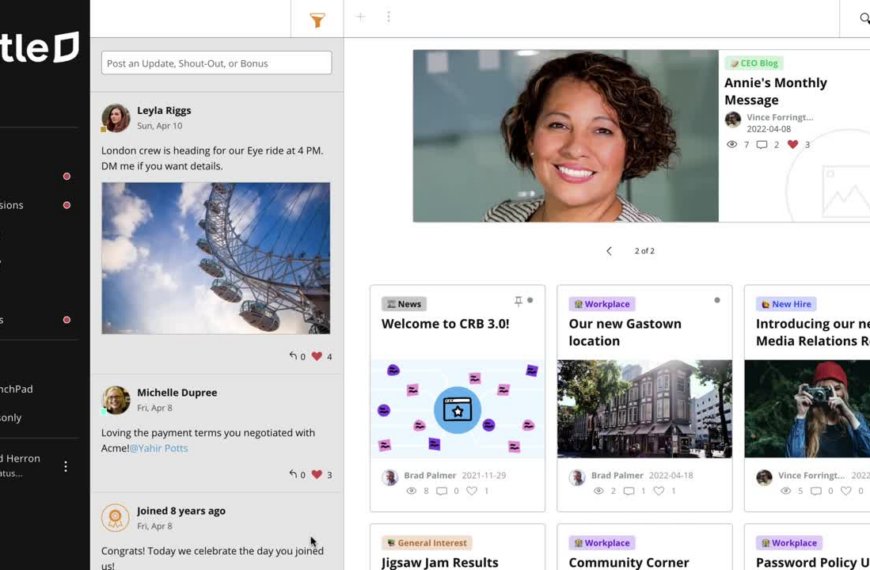
Jostle is an employee success platform that emphasizes internal communication and employee engagement, with some features adaptable for external use cases.
Jostle focuses on a simple, intuitive user experience for communication, news feeds, directories, and a resource library. It aims to boost employee engagement and connect a dispersed workforce. While primarily an intranet, its resource sharing and communication features can be extended to limited external collaborations.
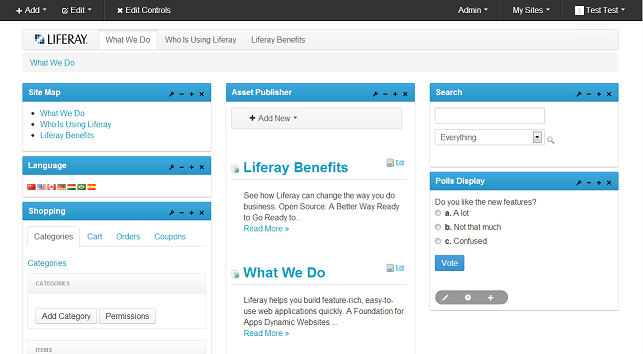
Liferay is an open-source digital experience platform (DXP) that can be used to build a wide range of portals, including intranets, extranets, and customer portals.
Liferay offers extensive capabilities for content management, personalization, collaboration, and integration. Its modular architecture allows organizations to build highly customized digital experiences. It’s often chosen for complex enterprise environments requiring significant flexibility.
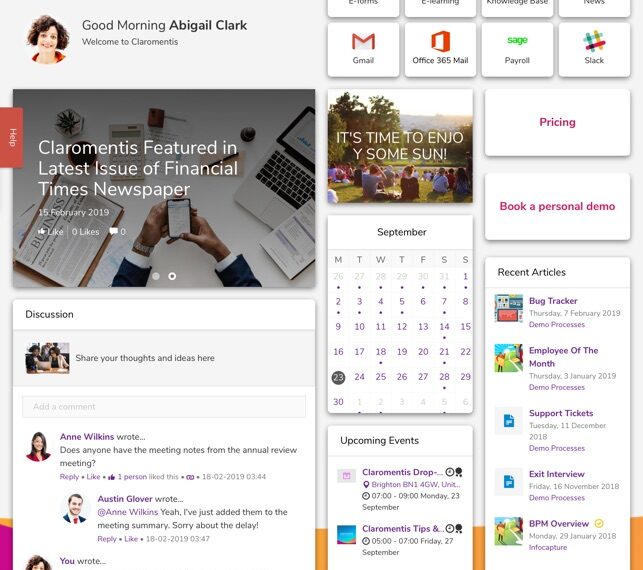
Claromentis is a comprehensive intranet and extranet software platform that offers a wide range of features for internal and external collaboration.
Claromentis provides modules for document management, project management, social tools, news, and HR functionalities. It emphasizes a user-friendly experience and offers strong customization options for branding and content. Its extranet solutions are designed to provide secure, personalized portals for external stakeholders.
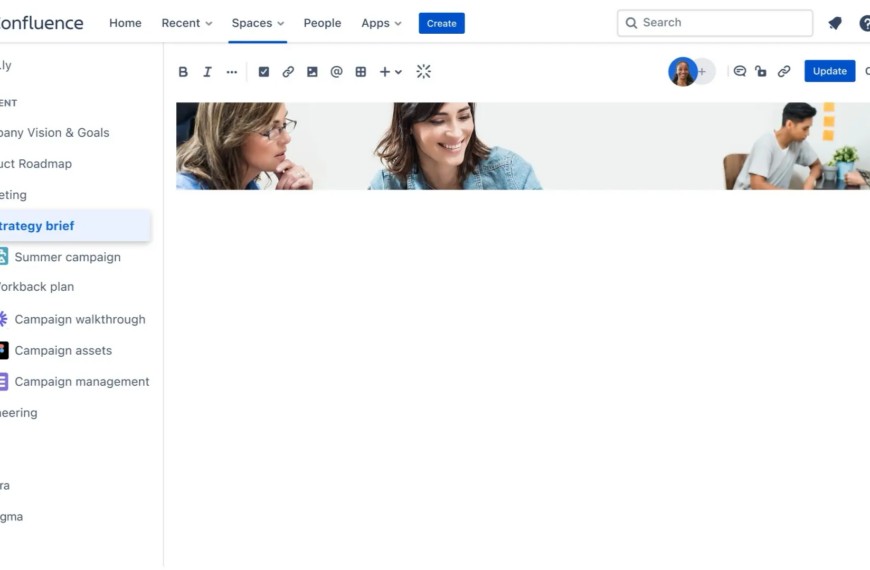
Confluence, part of the Atlassian suite, is a powerful knowledge base and collaborative workspace tool, primarily used for internal teams but adaptable for external use with proper configuration.
Confluence excels at creating and organizing knowledge, documenting projects, and facilitating team collaboration through rich-text pages, wikis, and integrations with Jira. While designed for internal teams, its flexible permission settings and ability to share public links make it usable for external knowledge sharing or project collaboration.
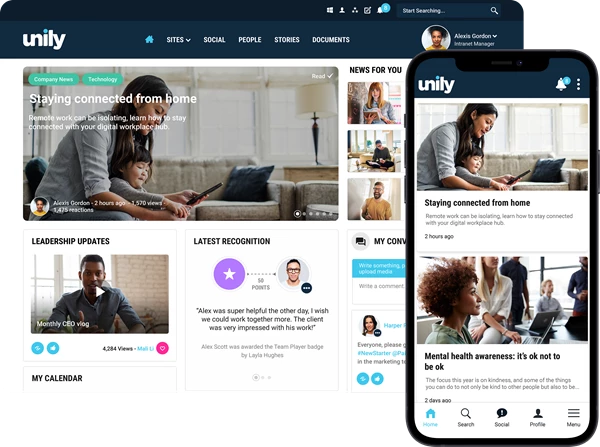
Unily is a leading digital workplace platform built on Microsoft Azure, focusing on employee engagement, communication, and productivity, with strong extranet capabilities.
Unily offers a highly personalized and engaging user experience, leveraging AI for content delivery and robust analytics. It provides a comprehensive suite of tools for internal communication, content management, social networking, and integrations with Microsoft 365. Its extranet solutions are designed for secure and personalized experiences for external partners and customers.
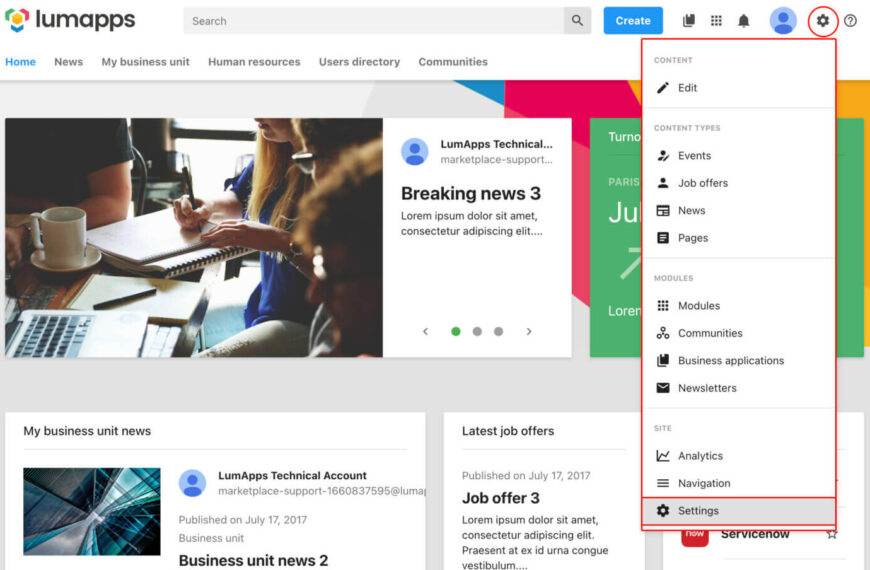
Lumapps is a social intranet and digital workplace platform that focuses on enhancing employee experience and communication, offering features for external communities.
Lumapps emphasizes a personalized, social experience for employees, providing tailored news feeds, communities, and a comprehensive search. It integrates deeply with both Microsoft 365 and Google Workspace, making it flexible for various IT environments. It also supports the creation of external communities and partner portals.
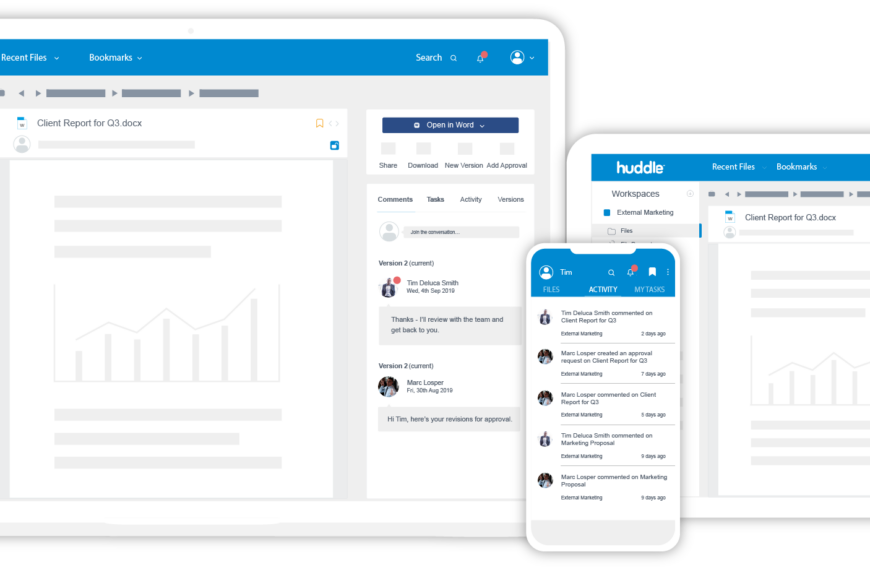
Huddle is a cloud-based collaboration and document management platform, specifically designed for secure external file sharing and project collaboration.
Huddle focuses on secure document collaboration, version control, and task management, particularly for working with clients, partners, and external stakeholders. It offers branded client portals, file requests, and government-grade security.
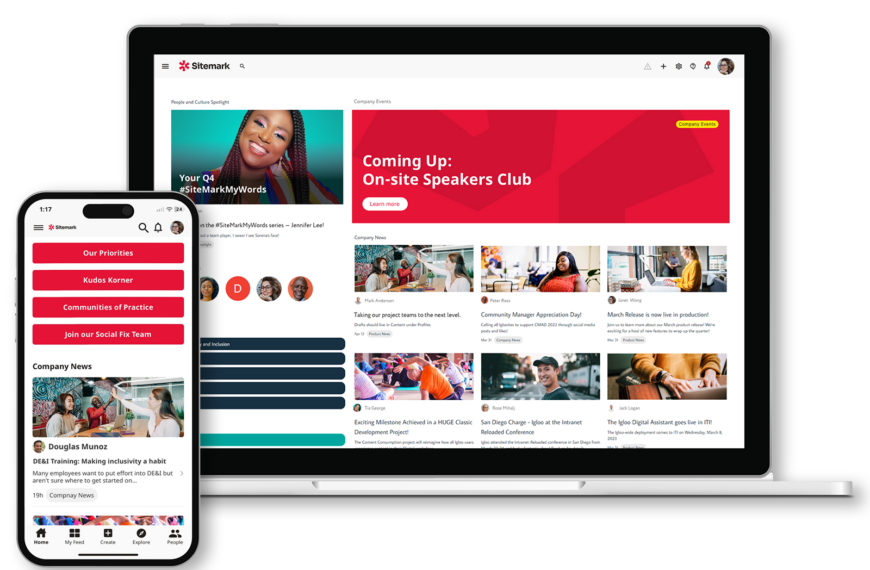
Igloo is a digital workplace platform that provides an intuitive and customizable solution for communication, collaboration, and knowledge sharing for both internal and external users.
Igloo offers a user-friendly interface with drag-and-drop content creation, a comprehensive content management system, and features like blogs, wikis, forums, and file sharing. It prioritizes customization to match brand and specific organizational requirements, and supports customer and partner communities.
| Platform | Extranet Focus | Open Source | Integrations | Social Tools | Security | Best For | Detailed Pricing (2025) |
| eXo Platform | ✅ Strong | ✅ Yes | ★★★★ | ★★★★★ | ★★★★★ | All‑in‑one solution | From $3/user/month |
| SharePoint | ✅ Strong | ❌ No | ★★★★★ | ★★★★ | ★★★★★ | Enterprise | $5–$23/user/month (Microsoft 365) |
| Jostle | ✅ Medium | ❌ No | ★★ | ★★ | ★★ | SMBs | $8–$12/user/month |
| Liferay | ✅ Strong | ✅ Yes | ★★★★★ | ★★★★★ | ★★★★ | Developers | $12–$22/user/month or custom pricing |
| Claromentis | ✅ Strong | ❌ No | ★★★★ | ★★★ | ★★ | Mid‑size Companies | From $9/user/month |
| Confluence | ✅ Strong | ❌ No | ★★★★★ | ★★ | ★★★★★ | Tech Teams | $5–$10/user/month |
| Unily | ✅ Strong | ❌ No | ★★★★★ | ★★★★ | ★★★★★ | Enterprises | $15–$25/user/month |
| LumApps | ✅ Strong | ❌ No | ★★★★ | ★★★★ | ★★★★ | Enterprises | $8–$15/user/month |
| Huddle | ✅ Strong | ❌ No | ★★ | ★★ | ★★★ | Legal / Finance Teams | $10–$18/user/month |
| Igloo | ✅ Strong | ❌ No | ★★★★ | ★★★ | ★★★ | Knowledge Workers | $9–$16/user/month |
eXo Platform rises above its competitors by offering an all-in-one open-source digital workplace solution that balances flexibility, scalability, and user engagement. Despite a steeper learning curve, eXo provides unmatched value with:
Choosing the right extranet portal really comes down to three key factors: security, usability, and scalability. While platforms like SharePoint and Liferay have strong reputations, eXo Platform stands out as the best all‑around solution in 2025.
Whether you’re a large enterprise looking to securely collaborate with vendors and partners, or an SMB hoping to streamline internal and external communication, eXo delivers the right balance of flexibility, scalability, and engagement — all in one place.
Because it’s built on an open‑source foundation, eXo Platform may require a bit more setup and a steeper learning curve upfront. But this investment quickly pays off. It gives you total control — no being locked into a vendor’s roadmap or limited by closed‑source restrictions. You can tailor eXo to your exact needs, integrate it with virtually any existing system, and maintain full data sovereignty with on‑premise deployment.
More than just an extranet, eXo is a holistic digital workplace. It brings together document management, project collaboration, communication, and knowledge sharing in one seamless experience. Its focus on social collaboration and gamification encourages deeper connections between internal teams and external stakeholders, making interactions more productive and rewarding.
With its robust permission controls, enterprise‑grade security, and ability to support a wide range of external user groups, eXo Platform is ideal for organizations that want a future‑proof solution. It allows you to build and evolve your digital ecosystem exactly as your needs evolve.
In short, if you’re looking for an extranet portal that delivers long‑term adaptability, comprehensive features, and secure collaboration — eXo Platform is the best choice. Its combination of customization, security, and user‑friendly design makes it a top pick for building a connected, collaborative, and successful digital future.
🚀 Ready to transform your extranet? Start your journey with eXo Platform today.
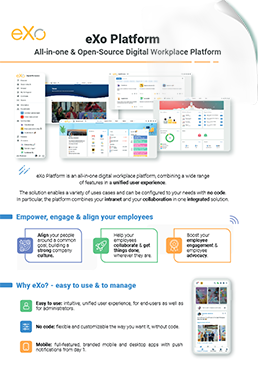
eXo Platform : The Open-Source
Digital Workplace Platform
Download the eXo Platform Datasheet and discover all the features and benefits
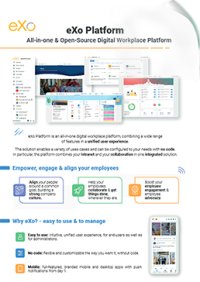

Download the eXo Platform Datasheet and discover all the features and benefits
An extranet is a private, controlled-access portal that facilitates communication and collaboration between an organization and authorized external users. These users may include clients, suppliers, partners, consultants, distributors, or remote teams.
Extranets are essentially private networks that allow authorized external users to access specific internal information and applications of an organization. Think of them as a secure bridge between your company’s internal systems and the outside world, but only for trusted partners, customers, or vendors.
Here’s a more detailed, human-friendly breakdown of how they operate:
To clarify the role of extranets, let’s compare them with intranets and the internet:
Some of the top benefits of implementing extranet include:
➝ See the full features list to Help You Choose the Right Extranet
You’re looking to implement an extranet, and that’s a smart move for collaborating with external partners! Here’s a rundown of best practices, made easy to read and with some updated use cases.
Think of an extranet as a secure, online space where you can share information and collaborate with people outside your organization, like clients, vendors, or contractors. To make sure it’s a hit, you’ll want to keep a few key things in mind:
An extranet isn’t a “set it and forget it” tool.
➝ ➝ See the best practices for Implementing an Extranet in detail
Security is absolutely critical for your extranet, as you’re sharing sensitive information with external parties. Think of it like safeguarding a digital vault – you need multiple layers of protection.
Here’s a human-friendly guide to keeping your extranet super secure:
When it comes to your extranet, security isn’t just a feature; it’s a non-negotiable foundation. Here’s how to build a fortress for your shared data:
Security isn’t a one-time setup; it’s an ongoing commitment.
intranet is a term used with abundance whenever the subject of internal communication and collaboration is brought up which makes defining it a bit challenging. In its simplest form, an intranet is an internal website for your organization. It is used mainly for top-down communication where employees can access corporate news, policies and announcements.
A CMS intranet is a secure internal platform that allows employees to create, manage, and share content across the organization. Think of it as your company’s digital headquarters—where communication, collaboration, and information management come together in one place.
( Your e-mail address will not be published)
I am a Digital Marketing specialist specialized in SEO at eXo Platform. Passionate about new technologies and Digital Marketing. With 10 years' experience, I support companies in their digital communication strategies and implement the tools necessary for their success. My approach combines the use of different traffic acquisition levers and an optimization of the user experience to convert visitors into customers. After various digital experiences in communication agencies as well as in B2B company, I have a wide range of skills and I am able to manage the digital marketing strategy of small and medium-sized companies.